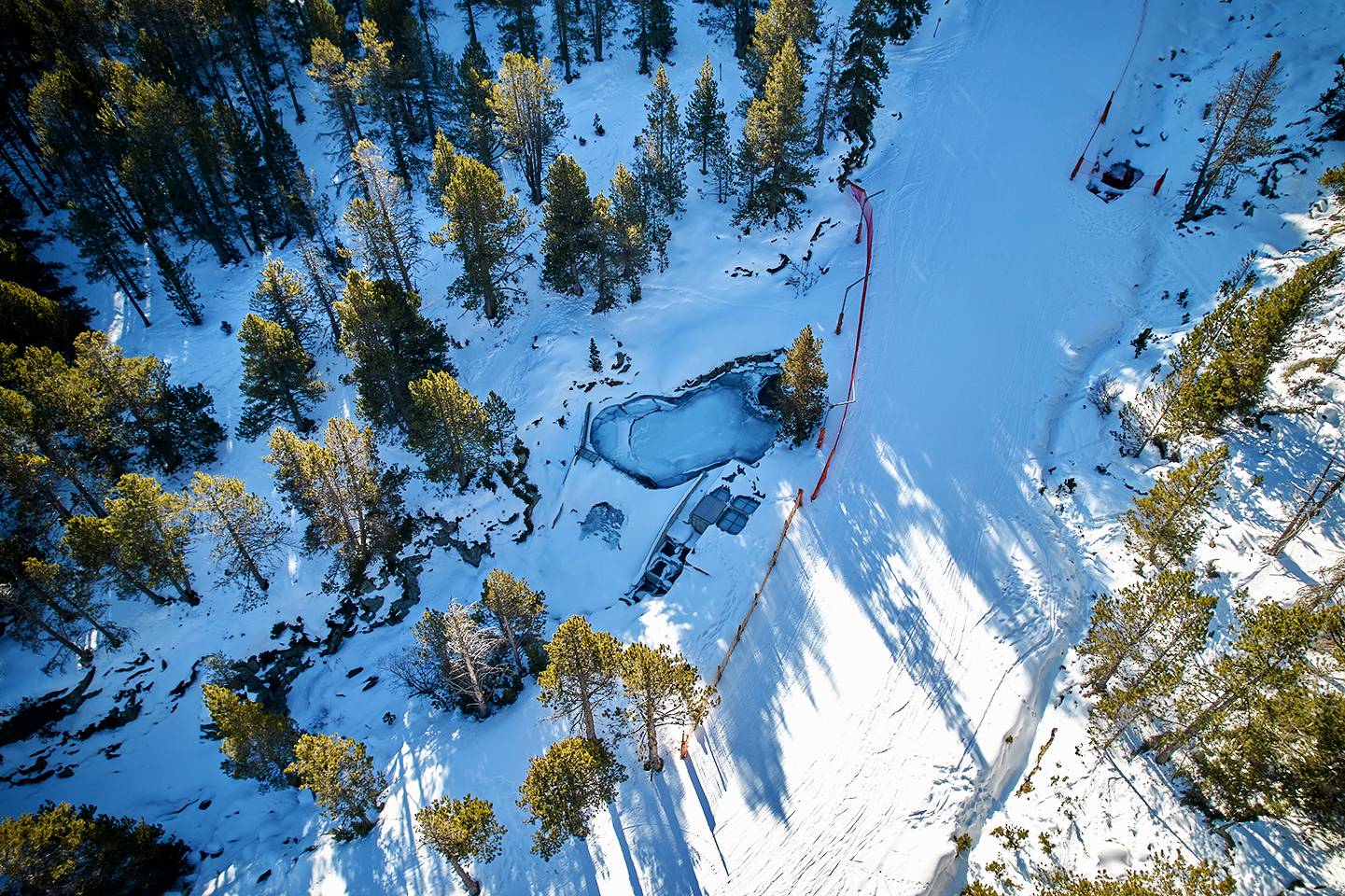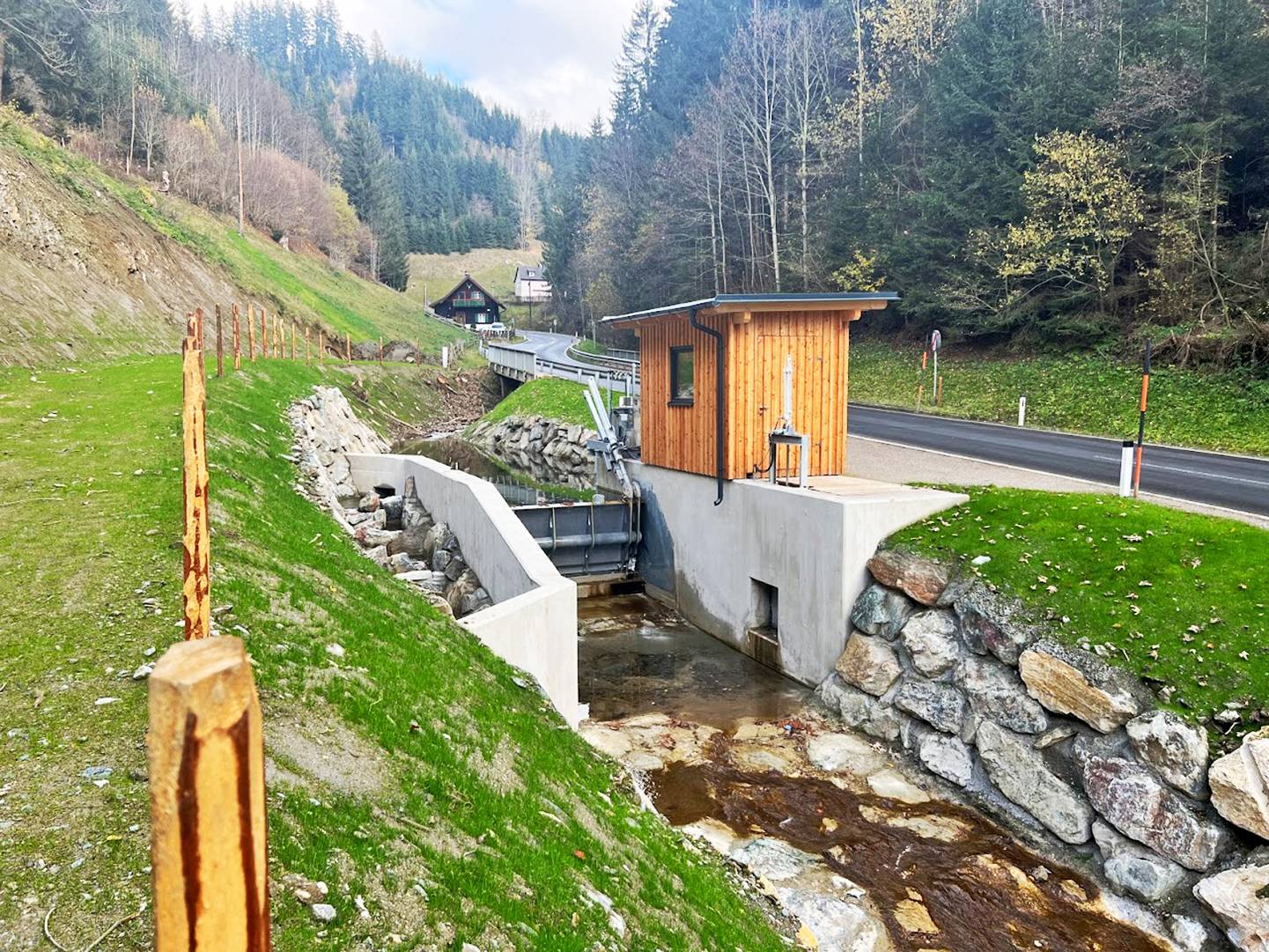High-pressure pumped-storage power plant Obervermuntwerk II nearing completion8 min read
Lesedauer: 6 MinutenIn the westernmost part of Austria, construction work at high-pressure pumped-storage power plant Obervermuntwerk II is in full swing.
Located in the district of Gaschurn in the Austrian province of Vorarlberg and operated by Vorarlberger Illwerke AG, the new facility is to be put into operation this year. With its two high-efficiency units, each consisting of a turbine, generator and pump, the facility will provide a bottleneck capacity of 360 MW and contribute significantly to the local supply of peak and regulating power. The large-scale project represents an investment volume of €500 million. Headquartered in Upper Austria, Bilfinger VAM Anlagentechnik GmbH, a trusted provider with an excellent national and international track record, was able to secure the contract for supplying the penstocks and steel lining with diameters of up to DN6000.
Construction work for high-pressure pump storage plant Obervermuntwerk II in the Silvretta region in Vorarlberg began already in 2014. That year, Vorarlberger Illwerke AG also initiated a construction project for the Rellswerk pump storage plant in nearby Vandans. (See the comprehensive article on that project in the February edition.) With its reversible pump turbine, the Rellswerk facility generates 15 MW in pumped operating mode and has a bottleneck capacity of 12 MW. By comparison, the generating capacity of Obervermuntwerk II will be four times as high. This is made possible by two ternary units, each consisting of a pump with transformer, a generator and a turbine with shifting clutch, which enable the facility to be operated in hydraulic short circuit mode. The units can be fully controlled across the entire operating range without the need for partial-load stabilisation. As such, they provide a total bottleneck capacity of 360 MW. Around €500 million will be invested into the construction of this underground power station. When finished, it will contribute significantly to the stabilisation of the European power grid.
Optimum use of energy potential
Also situated in Gaschurn is Vorarlberger Illwerke AG’s -most powerful facility – pump storage plant Kopswerk II, which was completed in 2008 and provides a bottleneck capacity of 525 MW. As a result, there was no need to apply for further water resource permissions. The concept behind Obervermuntwerk II is based on the idea of utilising the impounded headwaters of the existing Silvretta reservoir for hydropower generation and lead the tailwaters to the Vermuntsee. In terms of energy technology, the result ensures a highly efficient, optimised use of resources that up to now used to be utilised only by Obervermuntwerk I, which has been in operation since 1943. However, exploiting this hitherto unused energy potential requires a considerable amount of construction work. The complete motive water stream, including head- and tailrace tunnel, the intake structure, outlet structure and surge chamber, as well as the 125 m long, 25 m wide and 35 m high machine cavern will be installed underground. For the engineers, this means that they will have to resort the use of heavy machinery and rock blasting to get the job done. Things are complicated even further by the the restricted spacial conditions and the location of the construction site high up in the Alps. The Silvretta High Alpine Road serves as the main access road to the construction site, but as it is closed during the wintertime, a separate material rope way was installed. To reduce gravel transport by truck to a minimum level, the excavated material was directly recycled for concreting
Professionals at work
As might be expected, it takes absolute professionals to implement an elaborated and complex project like this. A quick glance over the list of contributing companies confirms this. The pumps and turbines are provided by leading large-hydropower specialists Voith Hydro and Andritz Hydro. The building construction and civil engineering work will be performed by a consortium consisting of Jäger Bau GmbH, Porr AG, Hinteregger Bau and ÖSTU-Stettin. Bilfinger VAM Anlagentechnik GmbH – yet another Austrian-based provider with excellent national and international references – was contracted for the penstock and steel lining. Bilfinger VAM has been proving its competence recently with a series of pressure shaft construction projects in Austria, including, for example, the Verbund operated pumped-storage power plant Reisseck II in Carinthia, and Kopswerk II, which is operated by Vorarlberger Illwerke. “The contract for Obervermuntwerk II involves three basic construction lots: Lots 1 and 2 comprise the design of the complete headwater and tailwater penstock piping and steel lining, including the throttle valve at the bottom of the surge chamber, as well as the shaft head bend and T-pieces. Lot 3 covers the rebuilding of the Obervermuntwerk I penstock. In future, this entire new penstock will run inside an underground gallery as an elevated construction. We are also responsible for installing the pump and pipework in the turbine house on behalf of various companies,” says Bilfinger VAM’s project manager, Erich Reiser. In the run-up to the project, Bilfinger VAM also carried out the detailed planning for the individual sections to meet the principals’ requirements.
Assembly shop high up in the mountains
Summer 2015 saw the kick-off to the installation stage, with the engineers from Upper Austria beginning work on the DN6000 steel lining for the 256 m pressure tunnel. As Reiser points out, handling the transport logistics and ensuring the most efficient storage of the large-sized structural components in the confined space of the construction site in the mountains posed quite a challenge by itself. Although the pressure tunnel’s DN6000 steel lining measured only 10 mm in thickness, its unwieldy overall size meant that the individual pipe sections had to be delivered as half shells and welded together on-site. For this purpose, the engineers set up an assembly shop, complete with advanced welding equipment and a portal crane, on the air side of the dam wall. Also the single pipe sections for the 290 m steel lining DN4500, each of them 3,5m long, were delivered to the construction site and welded together to pipes ready for installation within this assembly shop. To transport the pipes into the gallery, Bilfinger VAM constructed a special transport vehicle (pipe carrier). When they installed the penstock, the engineers proceeded step by step from the bottom up. The 148 m section in front of the Y-piece joint was installed at an incline of almost 48°. In joining the pipe sections, Bilfinger VAM relied on the “MAG-TPS/i” process developed by Upper Austrian specialist Fronius, which had been used primarily in the automobile industry. As Reiser explains, the MAG-TPS/i process enables root welding without the need for separate weld pool backing, which ensures high-quality final welds.
Mounting super-sized fittings with perfect precision
With the installation of the steel lining complete, the next item on the schedule was the construction of the manifold in front of the underground turbine house. Two T-pieces were mounted for the 51 m DN3100 turbine supply pipes and the 75 m DN3300 pump risers. Once that was done, the entire pipe section was filled with water and encased in concrete while under pressure. In summer 2016 the project moved to the next stage, which involved the construction of the DN3800 double machine branch pipes that connect to the bifurcator. As the last element of this section of the penstock system, the bifurcator itself was installed. It had been pre-fabricated at Bilfinger VAM’s headquarters in Wels, Upper Austria, and, like other components, it was also transported to Vorarlberg in individual parts. “The section with the T-pieces and branch pipes was quite a technical feat. It’s the point where all the machine units connect, so our engineers had to be extremely precise. It was quite an impressive achievement for our engineers and supervisors to manage a perfect fit at these dimensions and keep the welds steady enough to pass the pressure test with flying colours,” says Reiser. Next, the throttle valve was installed at the lowest point of the surge chamber, which serves to mitigate pressure fluctuations. With its 6.8 m diameter the throttle valve is the largest component in Bilfinger VAM’s portfolio in this project and took from June to September 2016 to install. To round off Construction Lot 2, sets of four 20 m DN4400 steel lining sections will be installed, which connect directly to the tailwater discharge gates behind the pumps and turbines. From there the used motive water proceeds to the Vermuntsee by way of concrete conduits, from where it is transported back upstream in pumping mode.
New penstock for Obervermuntwerk I
Final construction work on the Obervermuntwerk II project is currently in full swing. Unit 1 is scheduled to be put into operation by the end of September this year, followed by unit 2 only a few months later, in late December. For Bilfinger VAM, however, the project will not be complete at that point. Work on the third construction lot will be kicked off still in summer 2018 with the construction of the new penstock for Obervermuntwerk I. With an age of more than 70 years, the old overground steel pipe has reached its end of life. In future, the entire penstock will run underground as an elevated construction inside a completely rebuilt gallery. The steel pipes used by Bilfinger VAM for this purpose is sourced locally from Vorarlberg-based Bertsch Group as part of a business cooperation. The tunnel was already used as an access conduit during the construction of Obervermuntwerk II. Installing the new 1050 m DN1900 penstock is expected to take about a year.
Share:


